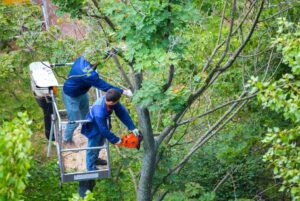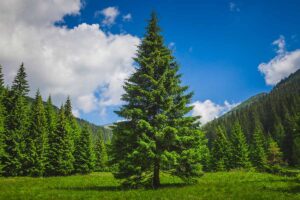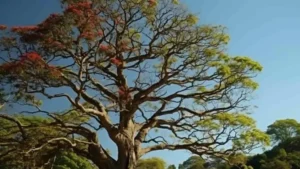Types of Palm Trees: A Comprehensive Guide
Palm trees are synonymous with tropical environments, coastal beauty, and exotic landscapes. With over 2,600 species globally, palms are incredibly diverse, and each type has its unique characteristics. Whether you’re strolling along a beach, exploring a desert oasis, or admiring cityscapes, palm trees are a ubiquitous symbol of warmth and relaxation. In this article, we will explore the different types of palm trees, their distinguishing features, where they are commonly found, and how they vary in height, weight, and other factors.
1. Coconut Palm (Cocos nucifera)
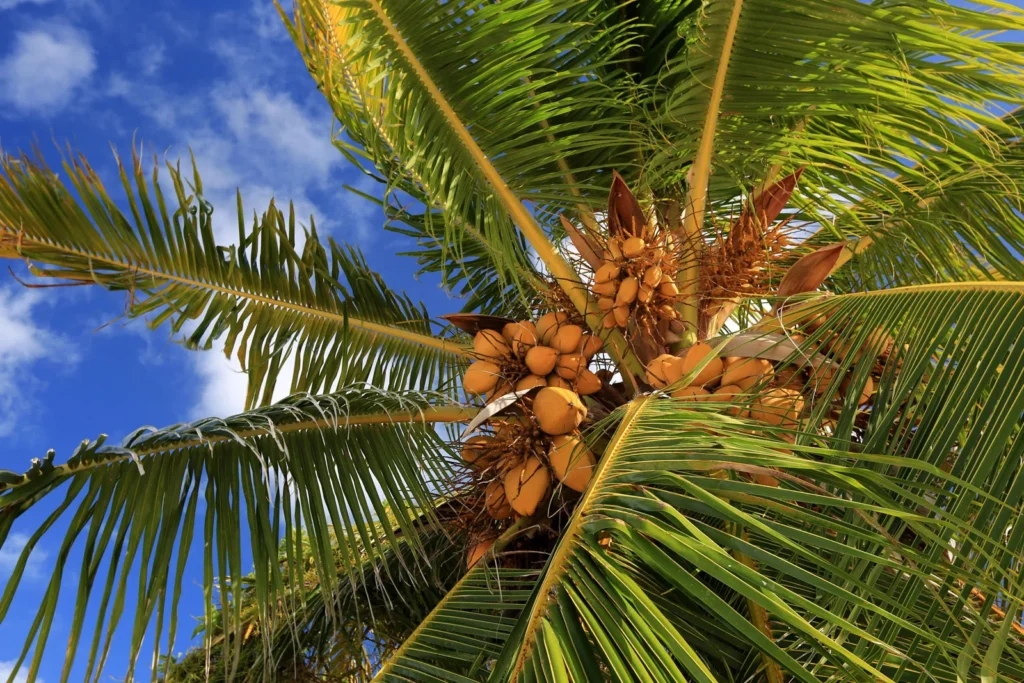
The Coconut Palm is one of the most recognizable palm trees due to its association with tropical beaches and its ability to produce coconuts. Native to coastal regions around the world, these palms thrive in sandy, salty soils and warm climates.
- Height: Typically grows between 50 to 80 feet.
- Weight: A mature coconut palm can weigh over 1,000 pounds, including the trunk, fronds, and coconuts.
- Characteristics: The trunk is slender and slightly curved, often with a swollen base. The fronds are long, feather-shaped, and arching. Coconuts grow in clusters near the crown.
- Where to Find: You can find Coconut Palms along coastal areas in the Caribbean, Southeast Asia, and Central America.
2. Royal Palm (Roystonea regia)
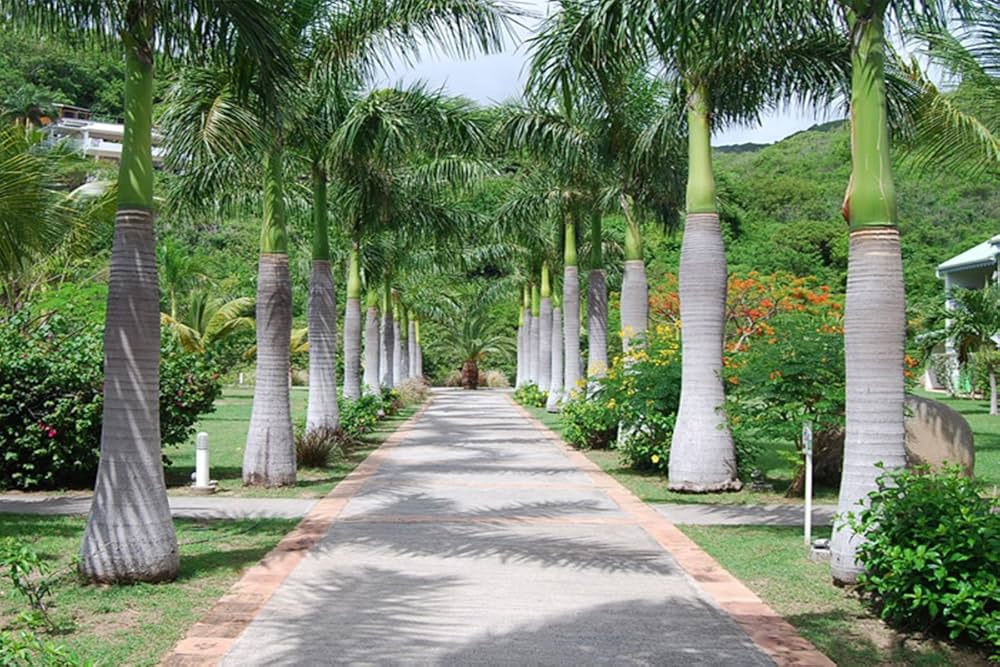
The Royal Palm is considered one of the most majestic palm trees due to its tall, smooth trunk and elegant appearance. This palm is a popular ornamental tree in tropical and subtropical regions, often lining streets and driveways in cities.
- Height: Reaches heights of 50 to 100 feet.
- Weight: Can weigh up to 1,500 pounds when mature.
- Characteristics: The Royal Palm has a smooth, gray trunk with a distinct green crownshaft at the top. Its fronds are long and pinnate, resembling feathers.
- Where to Find: Common in Florida, Cuba, and the Caribbean.
3. Date Palm (Phoenix dactylifera)
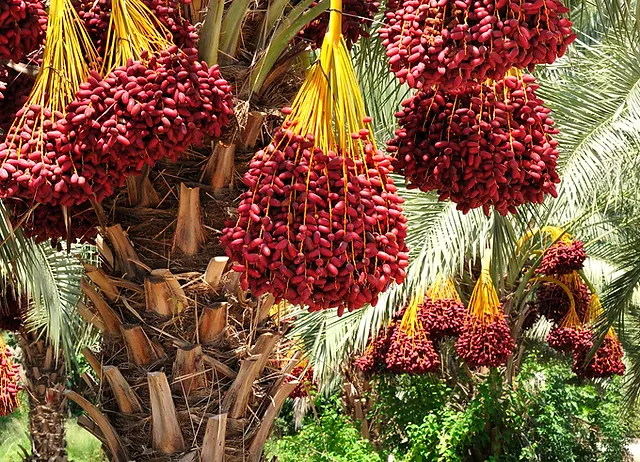
The Date Palm is famed for producing sweet, edible dates. This palm has been cultivated for thousands of years, particularly in the Middle East and North Africa, and plays a crucial role in desert agriculture.
- Height: Grows between 70 to 100 feet.
- Weight: A mature Date Palm can weigh around 1,000 to 2,000 pounds, depending on its age and size.
- Characteristics: Date Palms have a rough, fibrous trunk with long, pinnate fronds. Clusters of dates grow from the crown, ripening in the dry, hot climate.
- Where to Find: Widely found in North Africa, the Middle East, California, and Arizona.
4. California Fan Palm (Washingtonia filifera)
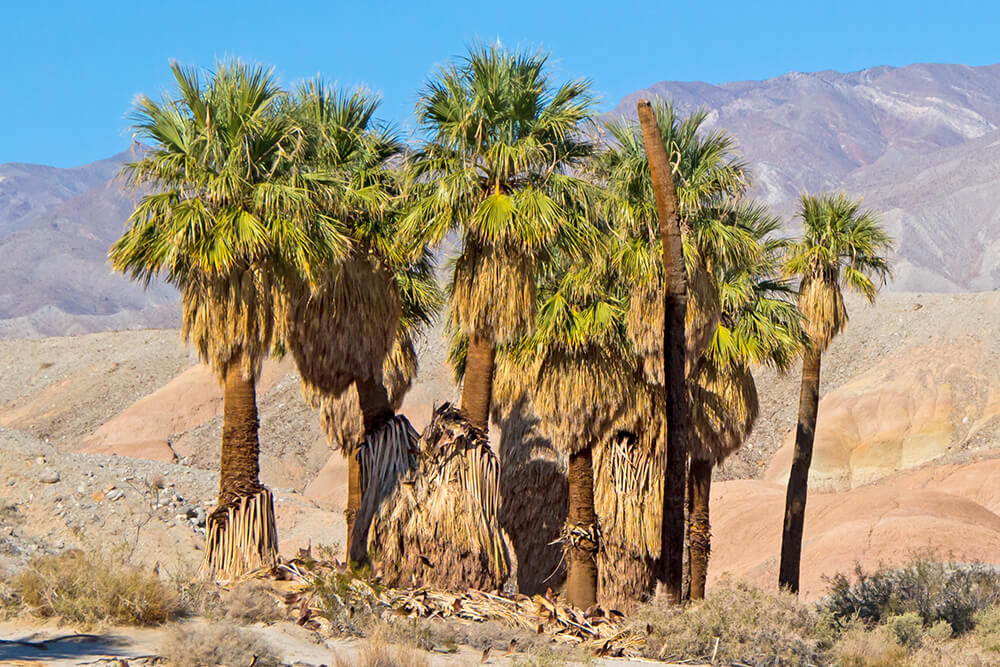
The California Fan Palm, also known as the Desert Fan Palm, is the only palm tree native to the western United States. Its fan-shaped fronds give it a unique appearance, and it is highly tolerant of dry, desert environments.
- Height: Can grow up to 60 to 80 feet.
- Weight: These palms are lighter compared to others, weighing around 500 to 1,000 pounds.
- Characteristics: The tree has a thick, rough trunk and large, fan-shaped fronds that can spread out several feet in width. The dead fronds often form a “skirt” around the trunk, providing extra protection.
- Where to Find: Native to California, Arizona, and parts of Mexico.
5. Pygmy Date Palm (Phoenix roebelenii)
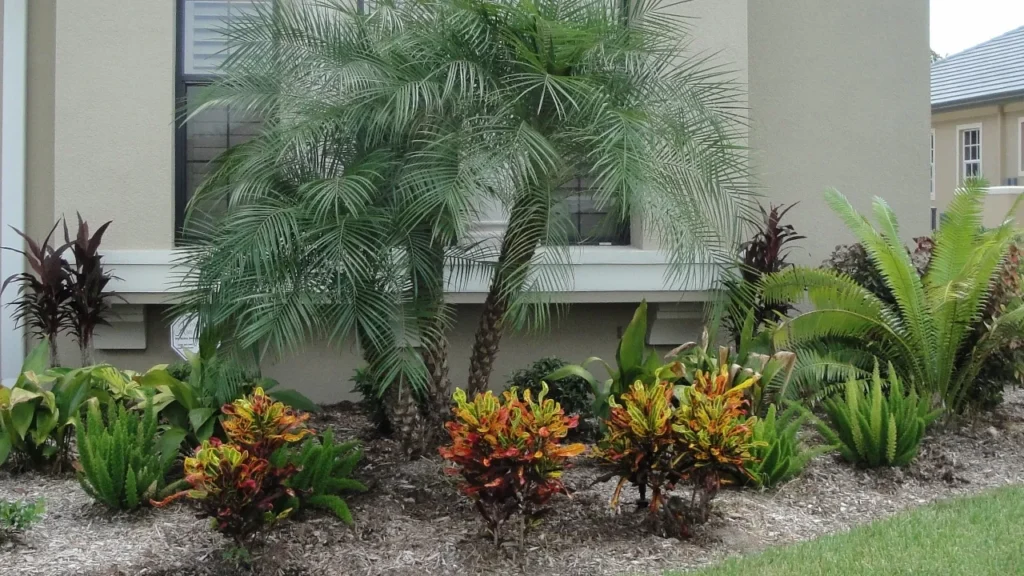
The Pygmy Date Palm is a much smaller variety of palm, making it a popular choice for gardens and landscaping in warmer climates. Though it resembles the taller Date Palm, it is far more compact and manageable in residential areas.
- Height: Typically grows to a maximum height of 10 to 12 feet.
- Weight: Smaller and lighter than most palms, weighing about 200 to 400 pounds.
- Characteristics: The trunk is thin and often grows in clumps. Its fronds are delicate and arching, and though it bears fruit, the dates are not usually consumed.
- Where to Find: Commonly found in Southeast Asia, as well as in Florida and other subtropical regions.
6. Bismarck Palm (Bismarckia nobilis)
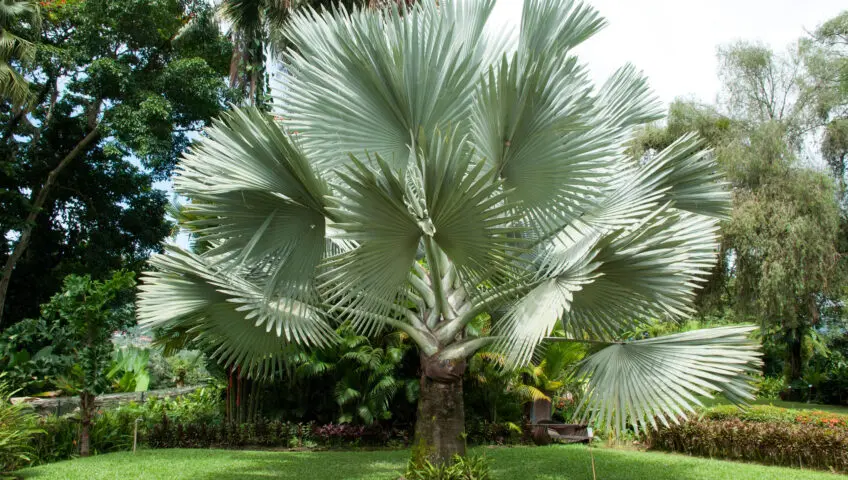
The Bismarck Palm is known for its large, fan-shaped fronds and striking silver-blue color. It’s one of the most impressive palm species due to its robust and dramatic appearance, often used as a focal point in landscaping.
- Height: Can reach up to 40 to 70 feet.
- Weight: A mature Bismarck Palm can weigh around 800 to 1,200 pounds.
- Characteristics: Its wide, fan-shaped fronds can span up to 10 feet in diameter, creating an imposing canopy. The trunk is stout and smooth, often pale gray.
- Where to Find: Native to Madagascar, it’s now widely planted in Florida, Texas, and California.
7. Foxtail Palm (Wodyetia bifurcata)
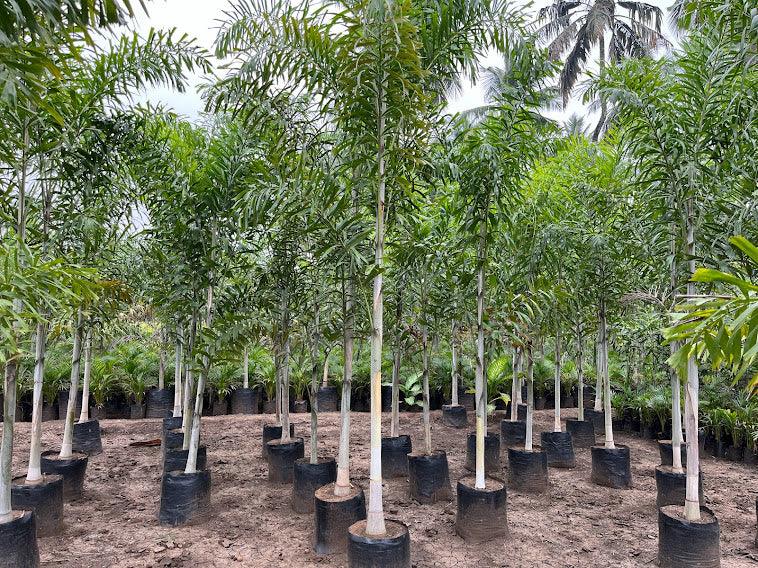
The Foxtail Palm is a relatively new addition to ornamental palms, only becoming popular in the late 20th century. Its unique fronds, which resemble a fox’s tail, give this palm a distinctive look that stands out in any landscape.
- Height: Grows to about 30 to 40 feet.
- Weight: A fully grown Foxtail Palm weighs around 500 to 800 pounds.
- Characteristics: Its fronds are feathery and full, giving it a bushy appearance. The trunk is slender and smooth, often gray or light brown.
- Where to Find: Native to Australia, it’s commonly found in Florida, Hawaii, and other tropical areas.
8. Areca Palm (Dypsis lutescens)
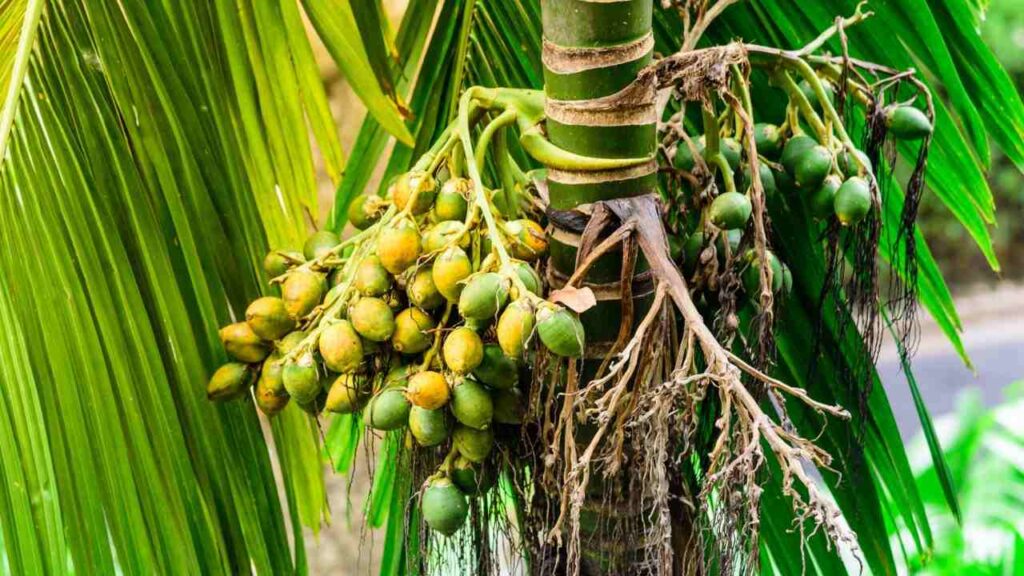
The Areca Palm, also known as the Butterfly Palm, is a popular choice for indoor and outdoor use due to its manageable size and aesthetic appeal. It’s often planted in clusters, creating a dense, bushy appearance.
- Height: Reaches about 15 to 25 feet.
- Weight: Weighs between 300 to 500 pounds.
- Characteristics: Areca Palms have thin, yellow-green trunks and feathery, arching fronds. They grow in clumps, creating a hedge-like appearance.
- Where to Find: Native to Madagascar, it’s widely grown in Florida, Hawaii, and indoor gardens across the world.
9. Windmill Palm (Trachycarpus fortunei)
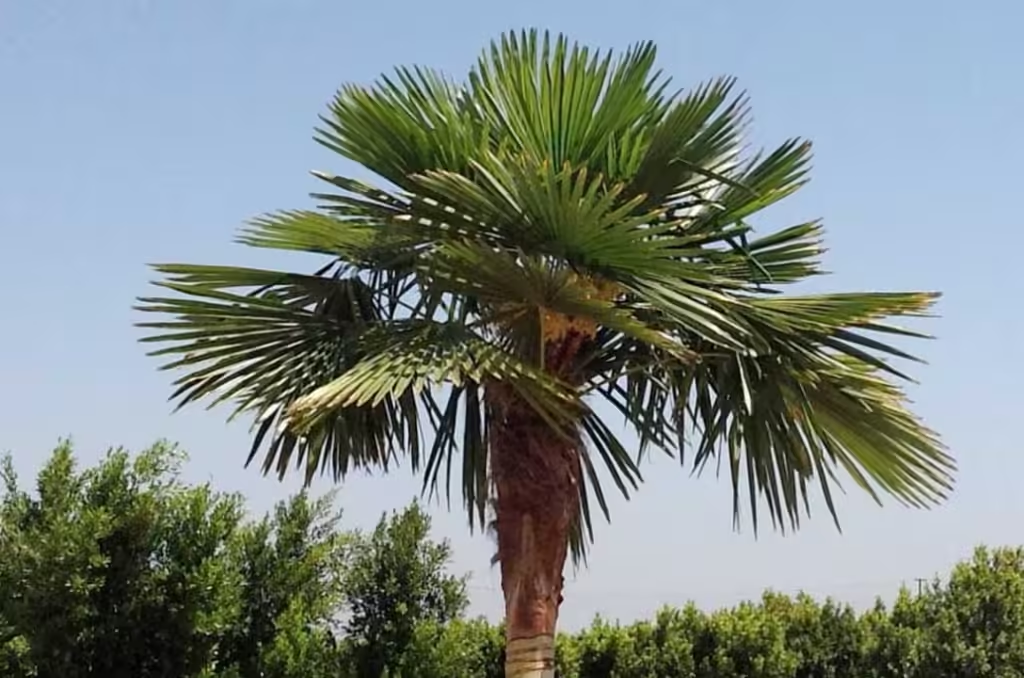
The Windmill Palm is one of the hardiest palm trees, capable of surviving in cooler climates. It is characterized by its fan-shaped fronds and slender, fibrous trunk, making it an excellent choice for temperate regions.
- Height: Grows between 20 to 40 feet.
- Weight: Typically weighs around 400 to 600 pounds.
- Characteristics: The Windmill Palm has large, fan-shaped fronds and a rough, fibrous trunk. It is more tolerant of cold weather than most palm species.
- Where to Find: Native to China but now found in temperate regions, including the Pacific Northwest, California, and parts of Europe.
10. Cabbage Palm (Sabal palmetto)
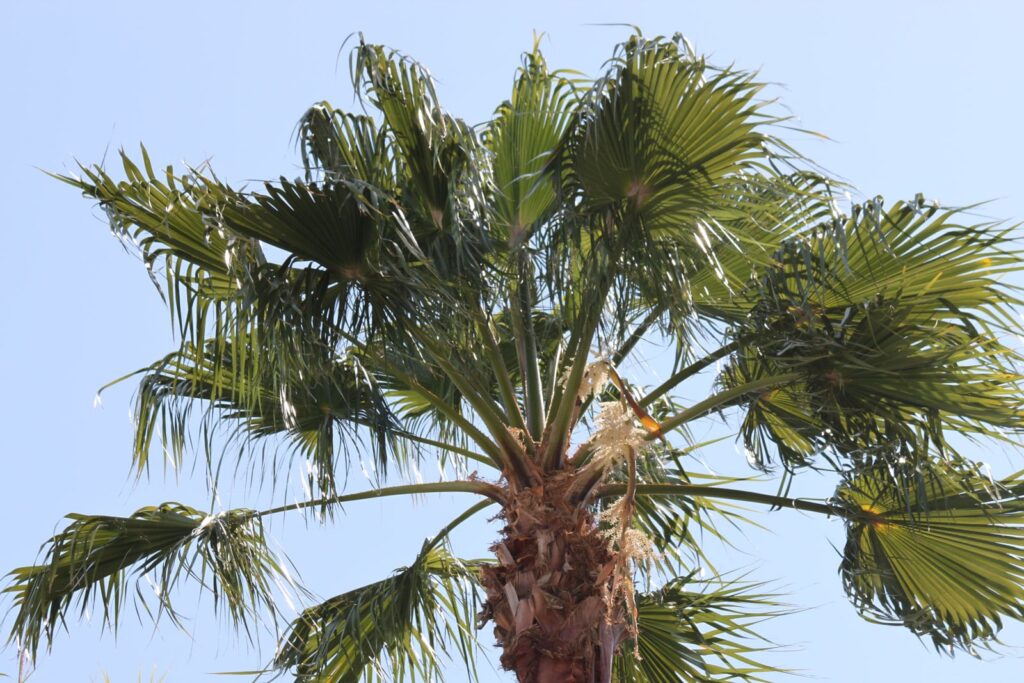
The Cabbage Palm, also known as the Sabal Palm, is the state tree of Florida and South Carolina. It’s a common sight in the southeastern U.S., known for its resilience and adaptability to various environments.
- Height: Reaches heights of 40 to 80 feet.
- Weight: Can weigh up to 1,500 pounds.
- Characteristics: The Cabbage Palm has a thick trunk with a rough texture. Its fronds are fan-shaped, and it produces small black fruits that attract wildlife.
- Where to Find: Native to the southeastern U.S., particularly in Florida, Georgia, and the Carolinas.
Differences Between Palm Trees
Palm trees can differ significantly in several aspects, including:
- Height: While the Pygmy Date Palm may only grow to 12 feet, a Royal Palm can soar up to 100 feet.
- Weight: Smaller palms like the Areca Palm weigh significantly less than towering species like the Coconut Palm.
- Fronds: Palm fronds vary from the feathery, pinnate fronds of the Date Palm to the fan-shaped fronds of the California Fan Palm.
- Trunks: Some palms, such as the Royal Palm, have smooth trunks, while others, like the Windmill Palm, feature rough, fibrous trunks.
- Climate Tolerance: Palms such as the Windmill Palm are more cold-tolerant, while others, like the **Coconut Palm**, require warm, tropical climates.
Where You Can Find Palm Trees
Palm trees are typically associated with tropical and subtropical climates, but they can also be found in more temperate regions, depending on the species. Some of the best places to find various types of palm trees include:
- Florida: Known as a haven for palms, from the Cabbage Palm to the Foxtail Palm.
- California: Home to iconic species like the California Fan Palm and Mexican Fan Palm.
- Southeast Asia and Pacific Islands: Coconut Palms and Areca Palms are commonly found in these regions.
- Middle East and North Africa: The Date Palm thrives in hot, arid environments.
- Australia: Known for the Foxtail Palm and other unique species.
Conclusion
Palm trees are as diverse as the environments they inhabit, ranging from towering giants like the Royal Palm to smaller, more delicate species like the Pygmy Date Palm. Whether you’re looking for an ornamental palm for your garden or interested in learning more about these iconic trees, understanding the differences between the various species can enhance your appreciation for their beauty and importance. From tropical coastlines to desert oases, palms continue to capture our imaginations and play a vital role in ecosystems around the world.
